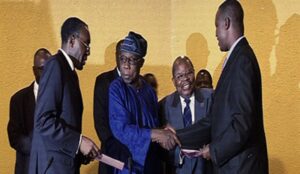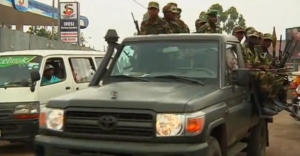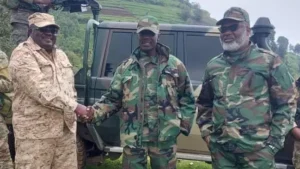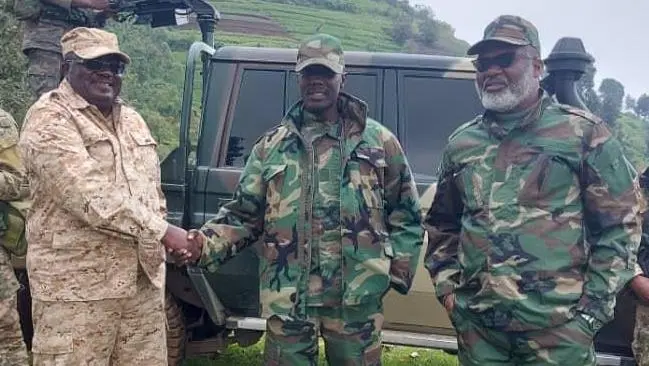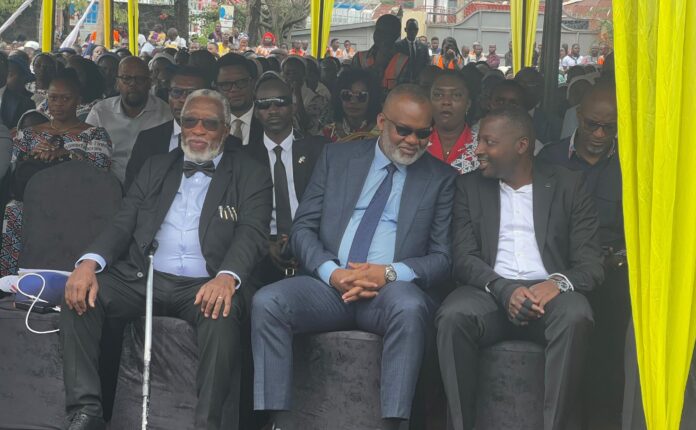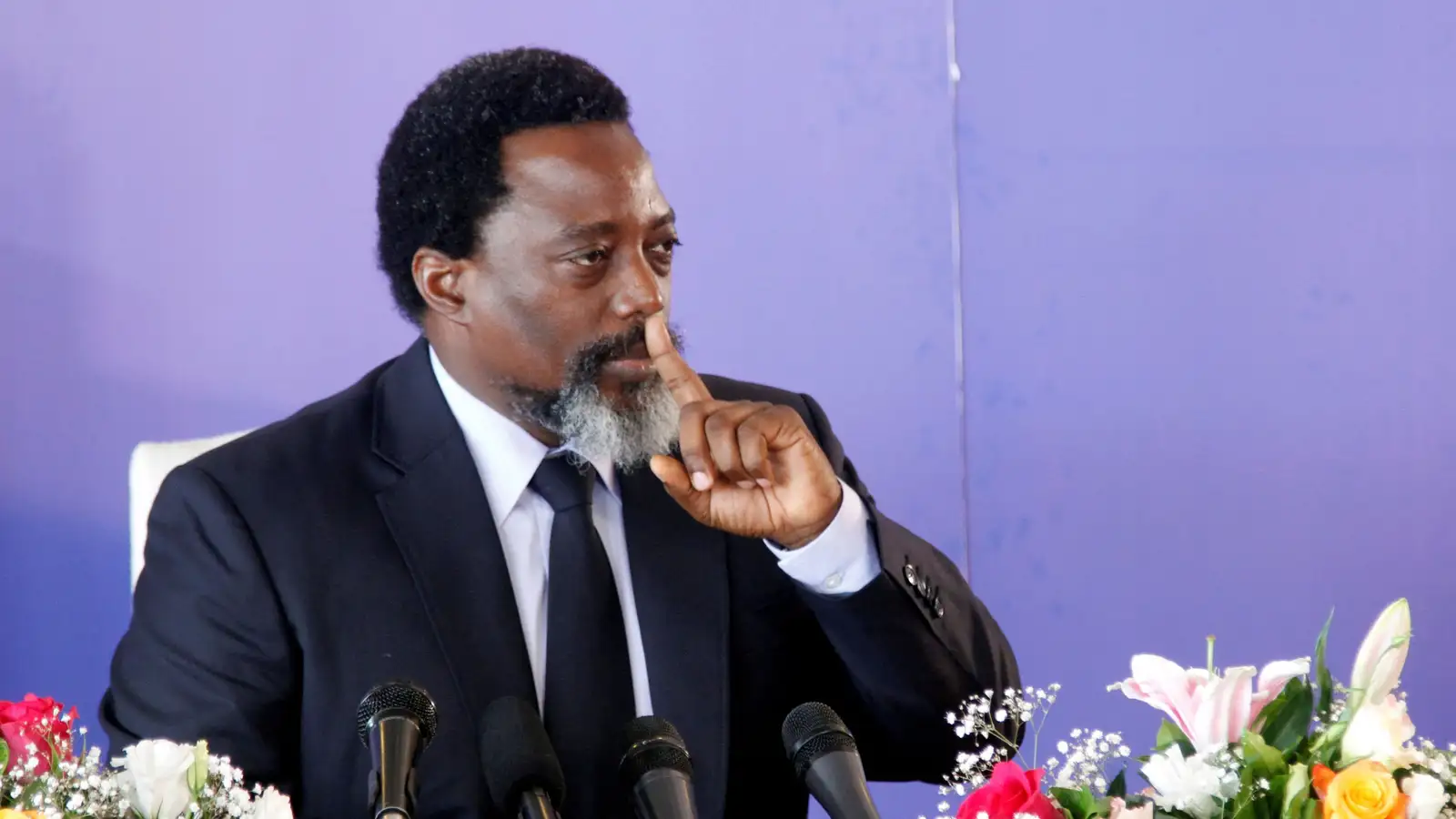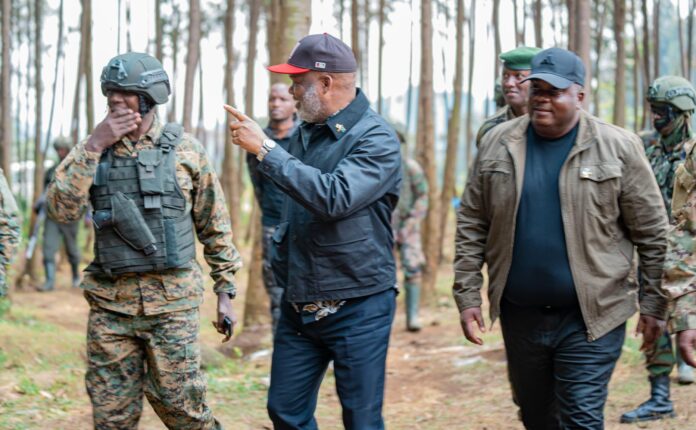It was a day of joy, a day of hope after many years of insecurity in the eastern part of the Democratic Republic of Congo (DRC). It was a moment of happiness for Congolese Tutsi speakers, especially the Tutsi community, as they believed that at last, they would find peace and no longer be subjected to persecution.
Note: Company, Blog, Church websites are free.
This was the sentiment of a Congolese citizen who had been displaced by the terrorist group FDLR, founded by perpetrators of the 1994 Genocide against the Tutsi in Rwanda. After fleeing into Virunga National Park, they were still pursued and eventually found themselves in a neighboring country.
However, this hope was not granted freely it was fought for by the military and political wing of the CNDP (Congrès National pour la Défense du Peuple), which had been engaged in battle against the Congolese army and FDLR for nearly three years.
On March 23, 2009, the government of the DRC, represented by the Minister of Regional Cooperation, Raymond Tshibanda, and the CNDP, represented by its president, Dr. Désiré Kamanzi, signed a peace agreement in the city of Goma.
This agreement was facilitated by two mediators: Olusegun Obasanjo, the UN Secretary-General’s Special Envoy for the Great Lakes region, and Benjamin Mkapa, representing the African Union and the region.
Before the agreement was signed, CNDP controlled the territories of Rutshuru, Nyiragongo, and Masisi in North Kivu. The group had indicated its willingness to lay down arms if the Congolese government addressed its concerns.
Under the agreement, Dr. Kamanzi and his delegation agreed to dismantle CNDP’s military structure and transition it into a legally recognized political party. The DRC government also committed to this process.
The government agreed to integrate CNDP’s soldiers and police officers into national security forces while maintaining their existing ranks. This meant that fighters such as General Bosco Ntaganda and Colonel Sultani Makenga would retain their respective military ranks.
Both sides agreed that all Congolese citizens had the right to live peacefully in their own country and that Congolese refugees in neighboring countries should be repatriated and restored to their properties.
To ensure the security of returning refugees, CNDP and the Congolese government agreed to establish a joint community police force.
In total, the peace agreement consisted of 16 provisions, all of which were to be implemented starting from March 23, 2009. The United Nations, the African Union, and the International Conference on the Great Lakes Region were responsible for monitoring the implementation.
Following the agreement, CNDP fighters were integrated into the Congolese security forces and deployed to various regions, including North Kivu. However, tensions soon resurfaced.
In 2012, General Ntaganda founded a new armed group based on the unfulfilled commitments of the 2009 peace agreement, calling it M23 (Mouvement du 23 Mars). It consisted of former CNDP fighters who had become disillusioned with the Congolese government.
General Ntaganda explained that they formed M23 because the DRC government continued persecuting Congolese Tutsis, including those integrated into the army, and failed to protect civilians.
This claim emerged at a time when many Congolese refugees remained in neighboring countries, with some who had returned being forced to flee again. Even today, some have been in exile for nearly 30 years.
M23 rapidly gained momentum, seizing large parts of North Kivu, including the city of Goma on November 20, 2012 just six months after its formation.
The international community reacted swiftly to M23’s capture of Goma. Regional leaders, including then-DRC President Joseph Kabila, convened in Kampala, Uganda, and reaffirmed the government’s commitment to the 2009 agreement.
Despite these promises, the United Nations’ Force Intervention Brigade (FIB), deployed under MONUSCO, launched a major military offensive against M23, alongside the Congolese army.
By November 2013, M23 had collapsed. Many of its members, including Major General Sultani Makenga, fled to Uganda, while others sought refuge in Rwanda, where they were housed in refugee camps as civilians.
While M23 movement remained in camps, they continued negotiating with the DRC government for the implementation of the 2009 peace agreement. However, these talks yielded no results.
In 2017, General Makenga and his fighters returned to Rutshuru but did not engage in combat with the Congolese army.
When Félix Tshisekedi assumed the presidency of the DRC in January 2019, M23 movement were hopeful that he would address their concerns. That year, they sent envoys to Kinshasa to negotiate with the new government.
Tshisekedi initially reassured M23 representatives, promising to integrate their fighters into a special forces unit that would provide presidential security and restore peace in eastern DRC. However, after waiting for 14 months without meeting the president, M23 movement returned to Rutshuru.
In November 2021, Tshisekedi ordered the Congolese army to launch an offensive against M23 positions in Rutshuru, where they had been awaiting negotiations. This marked the resumption of hostilities, which had been dormant since 2013.
In December 2023, a new political alliance, the AFC (Alliance Fleuve Congo), was formed, with M23 as one of its affiliates. It is led by Corneille Nangaa, the former president of the DRC Electoral Commission. Since the creation of AFC, M23’s strength has significantly increased.
Today, AFC/M23 movement control vast territories in North Kivu, including the city of Goma, and parts of South Kivu, including Bukavu. They continue to demand that the Congolese government engage in political dialogue with them to resolve the ongoing crisis.
